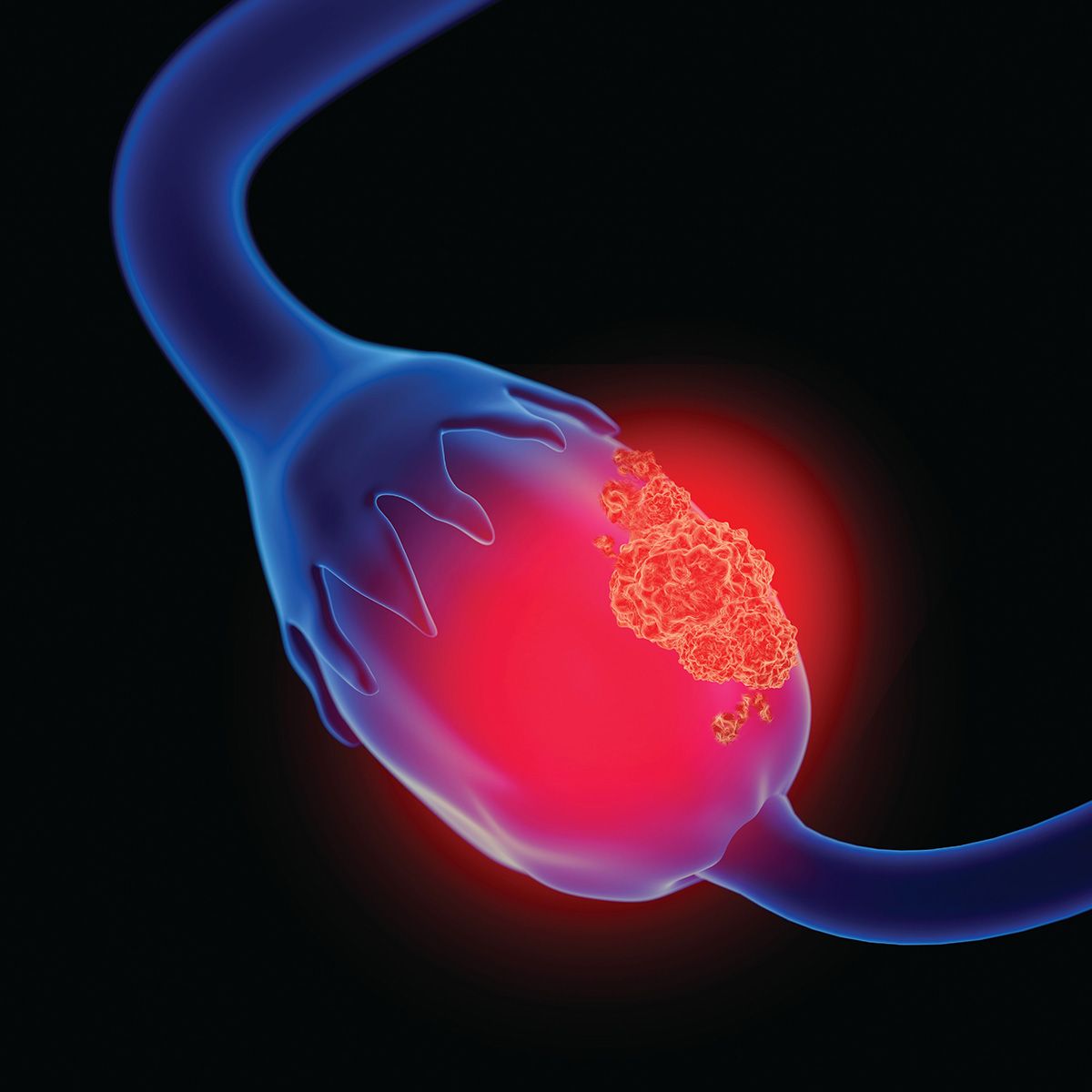Article
The Quest for More Biomarker Testing in Lung Cancer
Author(s):
Matthew Gubens, M.D., discussed the future of biomarker testing in non-small cell lung cancer.
Experts are expecting a transformation in the process of testing for genetic mutations and molecular targets, such as EGFR/ALK/ROS1 and PD-L1 in patients with non-small cell lung cancer (NSCLC).
“It is such an exciting time in lung cancer. We historically only had chemotherapy to offer to our patients, and now we have three pillars: chemotherapy, targeted therapies and now immunotherapy,” said Matthew Gubens, M.D. “Now, trying to choose the right patient, for the right therapy, at the right time is becoming increasingly important. Therefore, we have to be savvy about how we get tissue and how we use tissue.”
Please provide an overview on biomarker testing.
Gubens, an assistant professor of thoracic oncology at the University of California San Francisco, lectured on biomarker testing in NSCLC during an interview with CURE, where he shed more light on how far the field has come with molecular testing, the challenges still ahead, and what novel assays could be on the horizon.Who do we need to look for targets in so we can give the right targeted therapy? Of course, that starts with the economical EGFR/ALK/ROS1 test and what the FDA tells us we can give, but also looking at some of the emerging targets, such as HER2, BRAF and MET, where we have enough data in phase 2 trials to at least get us interested, if not putting a patient on trial and offering off-label drugs.
Some of those targets are in patients whom we really haven’t historically thought of for targeted therapy. It is just going to become even more important to offer this kind of testing across the board to all nonsquamous and, eventually and hopefully, squamous patients.
We are also now talking about PD-L1 testing with the advent of immunotherapy in the first-line setting. It is going to be so important to choose the right PD-L1 tests to figure out who we can offer the therapy to in the first-line setting, and who we have to hold off and do other treatments for first.
Aside from getting the tissue and using it, what other modalities can we use? The whole field of liquid biopsies is coming on fast and furious and it’s such an exciting opportunity to get noninvasive testing in a way that might sample the whole extent of metastatic tumor, but also fraught because we need to make sure we use it in a smart way and not displace our gold standard. How we use tissue and liquid together in a smart, complimentary way is the challenge going forward.
Let's say you get a patient with newly diagnosed NSCLC. Do you test them for PD-L1 expression and EGFR/ALK/ROS1 simultaneously, or does one molecular test come first?
Finally, how do we rebiopsy? When is it appropriate and important to go back and get more tissue or blood to choose a next-line therapy? EGFR is pointing the way with the third-generation tyrosine kinase inhibitor (TKI) Tagrisso (osimertinib). It is also just setting a new paradigm where I hope that, 1 or 2 years from now, we are going to talk about rebiopsying ALK or ROS1. We need to understand how tumors evolve and be smart about offering precision medicine, not just as a step 1, but steps 1, 2, 3 and 4. This is a huge challenge right? Partly, you are dealing with a situation where, sometimes, there’s not that much tissue to go around, especially in lung cancer. Is that enough to answer all of the questions we just posed?
That is part of the challenge with working with our multidisciplinary teams to, first of all, make sure we get enough tissue to answer our questions. Secondly, to make sure that the turnaround time is one that we can actually treat the patient clinically.
Your question is spot-on. A lot of us [are] trying to figure out whether you [should] check for a few things initially; that can be easy on the tissue but then adds up costs. We are really moving to a place where it’s nice to be able to do multiplex testing from the beginning. In the end, it’s probably cost effective because you can do a lot of tests on a little tissue.
The downside, of course, is that sometimes that can take a while to come back. If you don’t have three to four weeks to get a decision, how can we use other tools to get that decision quicker? Some of us are using short-term targeted genomics for some targets such as EGFR, we might use fluorescence in situ hybridization, which comes back quick for ALK and ROS1, while PD-L1 is an immunohistochemistry test that should come back within one week.
Usually, we are sending those upfront and then letting the multiplex testing for all of the other targets kind of percolate along at three to four weeks. Or, we can look for those important first-line targets and if those come back negative, then you might consider doing the multiplex testing second.
What is the prevalence of patients who are EGFR-mutant and also have high levels of PD-L1?
It has to be a decision on the institutional level, but we are really keeping in mind how we can make sure that we have the tissue to answer those questions. That is so important because now, we have a lot of questions to ask and it’s hard to rebiopsy. Sometimes, we will have to do that for the patients’ sake. That is an interesting question. We are sending the tests out together, so we get the information back together. It is important to remember that the KEYNOTE-024 study, which was presented at the 2016 ESMO Annual Congress and is now published, lets us give Keytruda (pembrolizumab) if PD-L1 levels are 50 percent or higher. It specifically excluded EGFR and ALK and so, if you look at the NCCN guidelines, it’s important to point that out that if you have EGFR mutations and PD-L1 at high levels, you really have to treat the EGFR.
We don’t really know how often those correlate. In my practice, I have had a few, but we also know from all of the data we have that in a lot of these big phase 3 studies, the EGFR-positive patients often underperform the other patients. We kind of expect that because they tend to be less-angry tumors; they are not as inflamed, so it makes some sense.
Do we have agents that are just as specifically developed for ROS1 as they are for EGFR/ALK?
How do we reckon that with a high PD-L1 expression and EGFR mutation? Treat the EGFR because that really is the targetable lesion with the higher response rate out of the gate. Patients will get the immunotherapy eventually but the response rates are higher and the durations are higher. I would really favor looking at the targeted mutation there.The story with Xalkori (crizotinib) is so fascinating because it was initially developed mostly as a MET inhibitor. Then, researchers discovered it had ALK activity, then that it had ROS1 activity. It wasn’t a purposefully designed ROS1 inhibitor, but it’s very effective for those patients and has nice durability. Now that we have that targetable lesion, and because there’s a lot of homology between ROS1 and ALK, there is a lot of drug development that goes in parallel.
That said, not every ALK drug has good ROS1 activity. That is what’s important—for people to think about that. Certainly, there are clinical trials of emerging agents that have activity in both and it’s worth seeking those out because if there is a chance to extend that ROS1 benefit, all the better.
What role do you think PD-L1 will have in the future?
But, ROS1 is third to the table, it’s a little less developed with Xalkori just approved in 2016 for that, so it’s an emerging story as well. But, it’s exciting to see the FDA give credence to the data and give us that label so we can at least offer it in that first-line setting.We all know that PD-L1 is an imperfect biomarker, even with the patients at over 50 percent PD-L1 expression. In the KEYNOTE-024 study, the response rate is still 45 percent. It beats chemotherapy, but there is still a lack there. We also know from these studies that patients whose tumors don’t express PD-L1 can have benefit as well, just at a lower rate.
Very clearly, it is our first generation of biomarker testing, and there is so much information about which PD-L1 test to use. All of us in the field would say that two or four years from now, we are going to have a more savvy set of tools in the biomarker world to think about how to select patients for treatment, how to follow them on treatment, and whether that is PD-L1 plus other things, we have to see—this could include T-cell repertoire, genomics and tumor mutation burden.
What pivotal data could we see at upcoming medical meetings this year?
I’m also excited about some imaging agents, or tracers, that may help us look on treatment whether patients are having a response in the tumors. There is a lot of work being done there and it is very early in development, but we need to get savvier about how to choose patients and follow them on therapy. There is no question that we are going to be smarter about this in a few years. This could be a really exciting year, both at the 2017 ASCO Annual Meeting and 2017 ESMO Annual Congress. In the targeted therapy world, we are waiting with bated breath for the ALEX study results; the J-ALEX trial was presented last year and was a very exciting development that showed that Alecensa (alectinib) was far superior to Xalkori in the first-line setting. Now, we want to see that replicated in the rest of the world, so there’s a good chance of seeing some interesting data this year. We are also seeing these other emerging ALK agents and are curious to see what else will emerge on that front.
In the immunotherapy world, all of us are awaiting some of the big phase 3 trials of combinations looking at immuno-based combinations, whether they’re PD-1 and CTLA-4 or some of the other combinations, see those data mature, and see if they best single-agent chemotherapy, single-agent immunotherapy, or double-agent platinum-based chemotherapy.
I am also really fascinated to see if we will get more of this work done in biomarker development. How do we understand the immune response better? How do we choose our patients better? We are moving past PD-L1, which was our first-generation biomarker, but we need to understand what to do with those quiet tumors. How do we wake them up and assess that? What are the new combination ideas that may target that? I am really excited to see some of those data start to emerge at the next couple of conferences.




